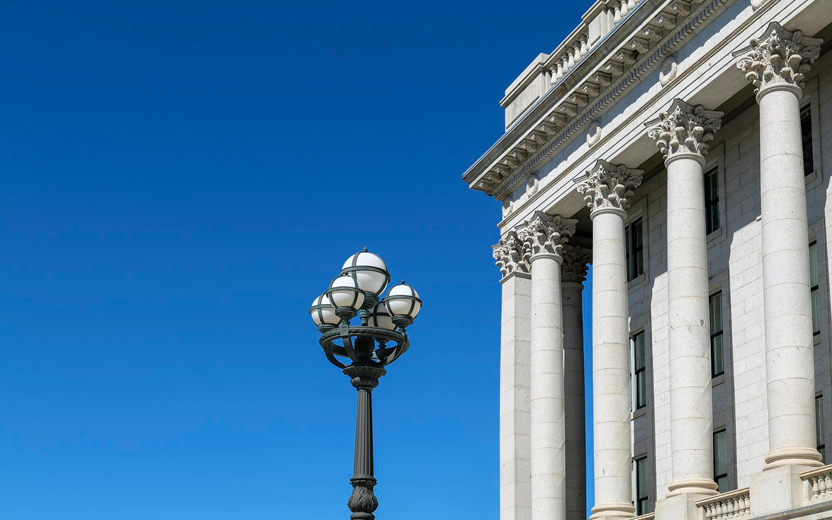Social Media Benchmarks for Government & Public Institutions
See how public sector organizations perform across social media channels—with real data, fresh insights, and actionable strategies.

The way the public connects with government is shifting—and so is the way public institutions need to show up online. This comprehensive benchmark report breaks down what’s actually working in government digital communications on social media right now. Based on 12 months of performance data, this study reveals the real engagement metrics, content trends, and platform-specific opportunities that can help public institutions boost trust, visibility, and impact in 2024.
Executive Summary
- Top-performing platforms for public engagement—and how to use each one strategically
- Comparison of content types by engagement across Facebook, Instagram, LinkedIn, X, and TikTok
- What post formats are being used most vs. what actually performs
- Content pillars that drive the strongest engagement across platforms
- Data-driven insights to help you boost follower growth in the public sector and craft smarter content
Averages Across All Platforms
Looking at the landscape as a whole, TikTok and Instagram lead the pack in engagement, but they win for very different reasons.
TikTok is the undisputed king of reach, with an average engagement rate by followers of 4.2%, and small accounts under 5K followers pulling as high as 16.5%. It’s a powerhouse for emotional, short-form video storytelling—especially around public participation and urgent announcements.
Instagram follows with 1.2% average engagement, fueled by strong-performing Reels and carousels. It’s a solid channel for government transparency on social media, especially when visual storytelling and public service messaging collide.
Facebook and LinkedIn both sit around 0.4% in follower-based engagement, but don’t count them out. Facebook still generates strong results for pages that lean into video and Reels. LinkedIn, while quieter, delivers 2.5% reach engagement across all page sizes, making it ideal for social media KPIs for public sector professionals focused on credibility and long-term visibility.
X (formerly Twitter), has flatlined in reach engagement but still shows signs of life when video is used strategically. It’s best suited for live updates, accountability content, and emergency communications social media metrics.
Engagement Rates by Content Type (Per Platform)
Photos make up the bulk of Facebook posts, but Reels deliver the highest engagement. They’re only 2.1% of posts, but outperform every other format. Albums and links are heavily used, yet struggle to drive interaction. Want results? Go short, visual, and story-first.
Reels are the highest-performing content type, with carousels close behind. But despite this, most content is still static images. Reels and carousels together form the engagement engine of public sector Instagram pages. If you’re not investing in short-form video here, you’re falling behind.
Images and documents drive the most engagement, despite documents only making up 9% of posts. Video, articles, and polls underdeliver, making LinkedIn a channel where well-designed, informative visuals still lead the conversation.
X (formerly Twitter)
Video is the top-performing content type, but it’s used far less often than photos and status updates. While reach is effectively zero, video consistently beats links and static formats for engagement. Real-time updates and transparency-focused content still find traction here.
TikTok
Unsurprisingly, it’s almost all video (99.7%)—and for good reason. Engagement rates are the highest of any platform. But here’s the twist: carousels, while barely used, perform just as well as video. It’s a signal that more format testing could push TikTok even further for government communications.
Post Formats by Volume (Per Platform)
What public institutions post and what’s actually working don’t always align.
Photos lead with 32.7%, followed by links and videos. But Reels, despite being the lowest in volume, dominate in engagement. Public institutions relying too heavily on static formats leave results on the table.
Photos again top the chart at 34.3%, followed closely by Reels and carousels. Reels have the highest engagement rate, but still aren’t the most used—highlighting a big opportunity for growth.
Images account for 58.1% of content, but documents—only 9%—are just as engaging. Most organizations underutilize documents, even though they’re ideal for delivering trust-building narratives.
X (formerly Twitter)
Photos and status updates make up nearly 70% of content, but video delivers the best results. GIFs are extremely rare but could offer a creative edge in an otherwise static feed.
TikTok
It’s 99.7% video, with carousels making up only 0.3%. But with equal engagement potential, adding carousel storytelling into the mix could give TikTok content an unexpected boost
Top Content Pillars (Per Platform)
Here’s where content strategy gets tactical: these are the content themes that actually perform across platforms for public institutions.
The most engaging pillars include Public Service Announcements, Success Stories & Impact Narratives, and Community Participation. Hard-sell or generic info posts lag behind.
Top themes include Public Safety Alerts, Transparency & Accountability, and Educational Content. These topics resonate when packaged with compelling visuals and caption-driven storytelling.
Educational posts, community spotlights, and emergency content drive the most interaction, especially when supported by image or document formats. Authority and clarity win here.
X (formerly Twitter)
Transparency, cultural content, and citizen services are key engagement drivers. Keep it short, real-time, and value-driven.
TikTok
Leading themes are Community Participation (at a whopping 23.2% engagement), Emergency Alerts, and Public Announcements. Keep it raw, relatable, and focused on human-centered storytelling.
Ready to download the full report?
The full PDF includes benchmark tables, platform-specific breakdowns, and real-world strategy insights—all designed to help you optimize your social media strategies for public institutions.
Whether you’re managing national outreach, local updates, or public health messaging, this report will help you level up with data-backed insights and performance benchmarks that actually matter.
Download the PDF now and see how your government social media performance stacks up.
Analyze your competitors in seconds
Track & analyze your competitors and get top social media metrics and more!
Ready to improve your social media strategy with real-time insights?
Get strategic insights, analyze the social performance across all channels, compare metrics from different periods and download reports in seconds.